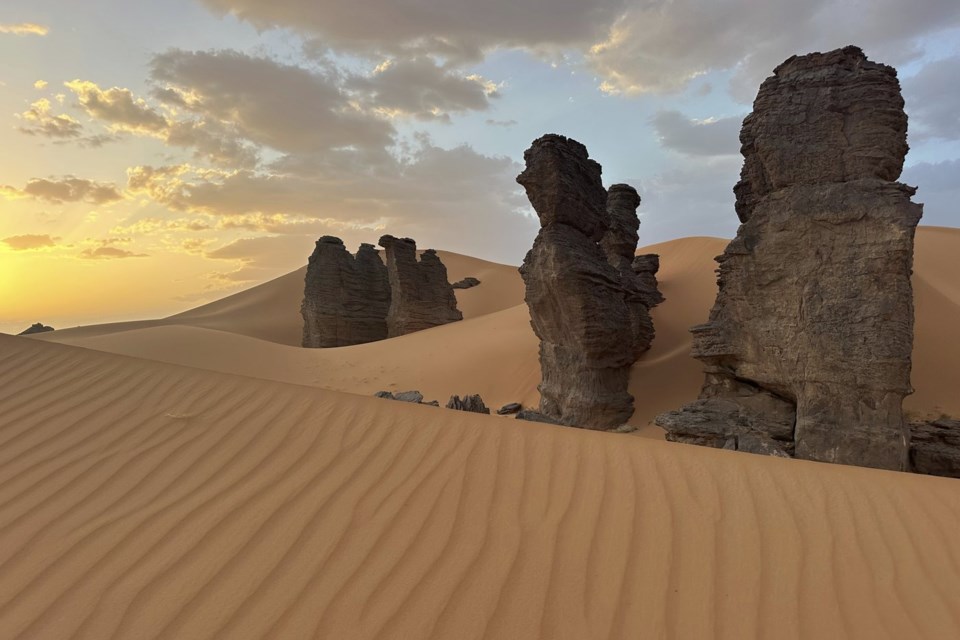UNITED NATIONS (AP) — Sand and dust storms affect about 330 million people in over 150 countries and are taking an increasing toll on health, economies and the environment, the U.N. World Meteorological Organization says.

UNITED NATIONS (AP) — Sand and dust storms affect about 330 million people in over 150 countries and are taking an increasing toll on health, economies and the environment, the U.N. World Meteorological Organization says.
“About 2 billion tons of dust are emitted yearly, equivalent to 300 Great Pyramids of Giza” in Egypt, the organization’s U.N. representative, Laura Paterson, told the General Assembly.
More than 80% of the world’s dust comes from the deserts in North Africa and the Middle East, she said, but it has a global impact because the particles can travel hundreds and even thousands of kilometers (miles) across continents and oceans.
The General Assembly was marking the International Day of Combating Sand and Dust Storms on Saturday and its designation of 2025 to 2034 as theU.N. decade on combating sand and dust storms.
Assembly President Philemon Yang said the storms “are fast becoming one of the most overlooked yet far-reaching global challenges of our time.”
“They are driven by climate change, land degradation and unsustainable practices,” he said.
Yang, in a speech Thursday that was read by an assembly vice president, said airborne particles from sand and dust storms contribute to 7 million premature deaths every year. He said they trigger respiratory and cardiovascular disease, and reduce crop yields by up to 25%, causing hunger and migration.
Undersecretary-General Rola Dashti, head of the U.N. Economic and Social Commission for Western Asia, told the assembly the storms’ economic costs are “staggering.”
In the Middle East and North Africa, the annual cost of dealing with dust and sand storms is $150 billion, roughly 2.5% of GDP, she said.
“This spring alone, the Arab region experienced acute disruption,” Dashti said, citingsevere storms in Iraqthat overwhelmed hospitals with respiratory cases and storms in Kuwait and Iran that forced schools and offices to close.
Dust from the Sahara Desert in Africa has reachedas far as the Caribbeanand Florida, she said,
Dashti, who also co-chairs the U.N. Coalition on Combating Sand and Dust Storms, said over 20 U.N. and international agencies are working to unite efforts on early warning systems for storms and to deal with other issues, including health and financing.
She urged all countries to put sand and dust storms into global and national agendas.
“From land restoration and sustainable agriculture to integrated early warning systems, we have the tools to act,” Dashti said. “What we need now is collective determination and financing to bring these solutions to scale.”
Edith M. Lederer, The Associated Press